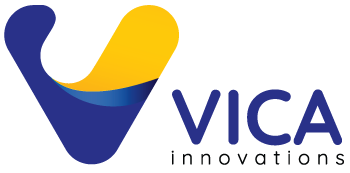Canadian finance and accounting teams are facing a perfect storm of digital-first tax filings, AI-assisted audits, stricter anti-money-laundering rules and the country’s first mandatory climate-disclosure standards. The glue that holds it all together is technology for accounting compliance. When chosen wisely, a modern stack turns overwhelming regulation into a strategic advantage by delivering cleaner data, faster filings and bullet-proof audit trails.
The 2025 compliance landscape
• The Canada Revenue Agency has removed almost every paper threshold for GST/HST and payroll remittances – API-ready data is now the price of admission.
• The CBSA’s CARM portal becomes the sole ledger for import duties this year, demanding direct feeds from your ERP.
• FINTRAC is piloting AI-driven compliance scorecards that grade firms on the quality of suspicious-transaction reports.
• The Canadian Sustainability Standards Board introduces CSDS 1 and 2, putting climate metrics on the same deadline as financial statements.
• OSFI Guideline B-13 links cyber-risk controls directly to regulatory capital for banks and insurers.
Why technology is non-negotiable
Real-time data equals real-time compliance. Continuous ledgers let tax engines validate GST codes instantly, trade modules confirm tariff classifications before goods cross the border and ESG platforms harvest energy readings nightly instead of quarterly. Automation slashes error risk: a single RPA bot can generate T-slips, attach evidence and e-file to the CRA in minutes, while AI outlier detection flags duplicate invoices before payment. Freed from manual drudgery, finance teams spend those hours on analysis and forecasting that move the business forward.
Six high-impact investments
- Cloud ERP with CRA and CARM integrations – choose vendors certified for the UBL e-invoice format.
- Robotic process automation – low-code bots that push GST/HST files, reconcile bank feeds and pull sustainability data from utility portals.
- RegTech AML suites – AI-enhanced monitoring and sanctions screening that output FINTRAC-ready XML in one click.
- ESG disclosure platforms – centralise Scope 1-3 emissions, scenario analysis and attestation evidence, with data residency in Canada.
- Distributed-ledger pilots – tamper-proof import records and smart contracts that auto-calculate duties.
- AI document intelligence – automated redaction of personal information and contract review for the new IFRS presentation rules.
Implementation checklist
Begin by mapping your regulatory footprint: ownership structure, import volumes, AML exposure and sustainability scope. Integrate first, customize second; API-centric platforms already connected to payroll, procurement and banking systems cut months off deployment. Build data governance from day one—consent logs, retention rules and encryption satisfy PIPEDA today and the forthcoming Consumer Privacy Protection Act tomorrow. Finally, align each tool with OSFI’s B-13 playbook: patch cadence, asset inventory and incident-response metrics should feed board dashboards and be ready for external auditors on demand.
Looking ahead
Real-time tax reporting, AI-based surveillance and climate disclosures will only accelerate. Treat technology for accounting compliance as a proactive investment—rather than a last-minute patch—and you will unlock cleaner data, smoother audits and more time for insight that drives growth. Ready to future-proof your finance function? Let’s talk.
Contact us at [email protected]





